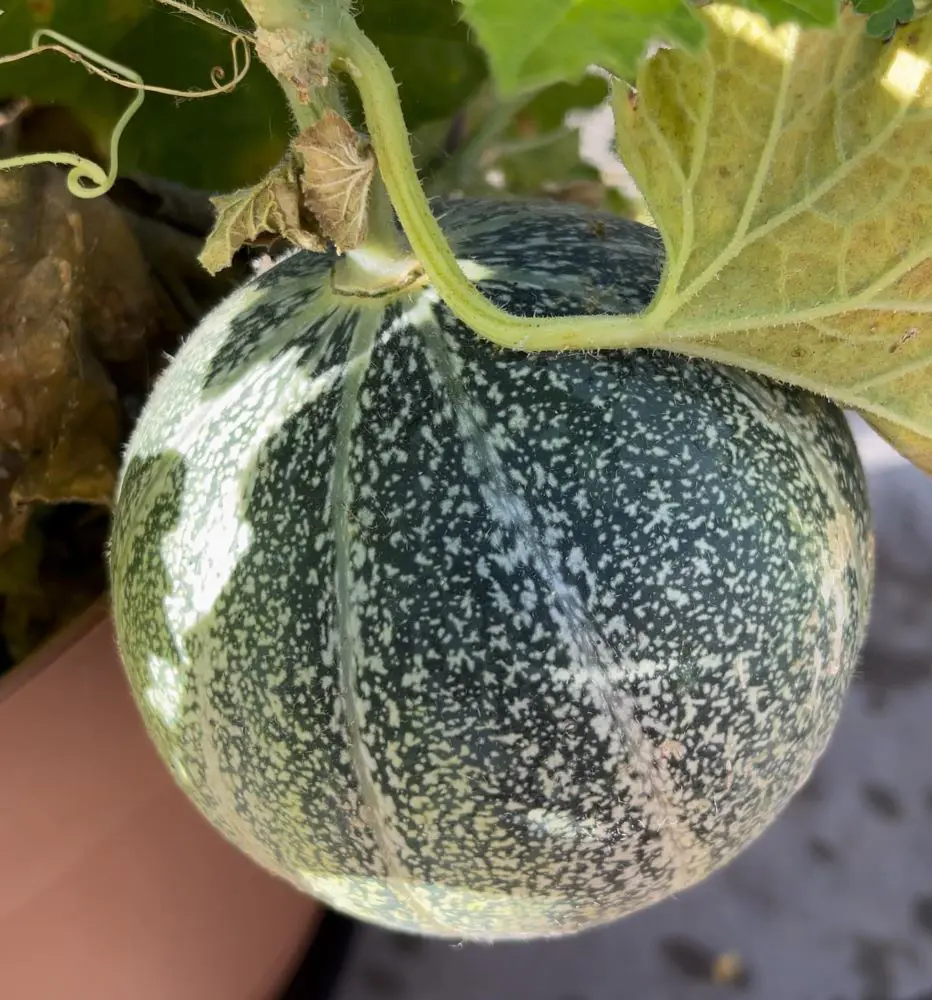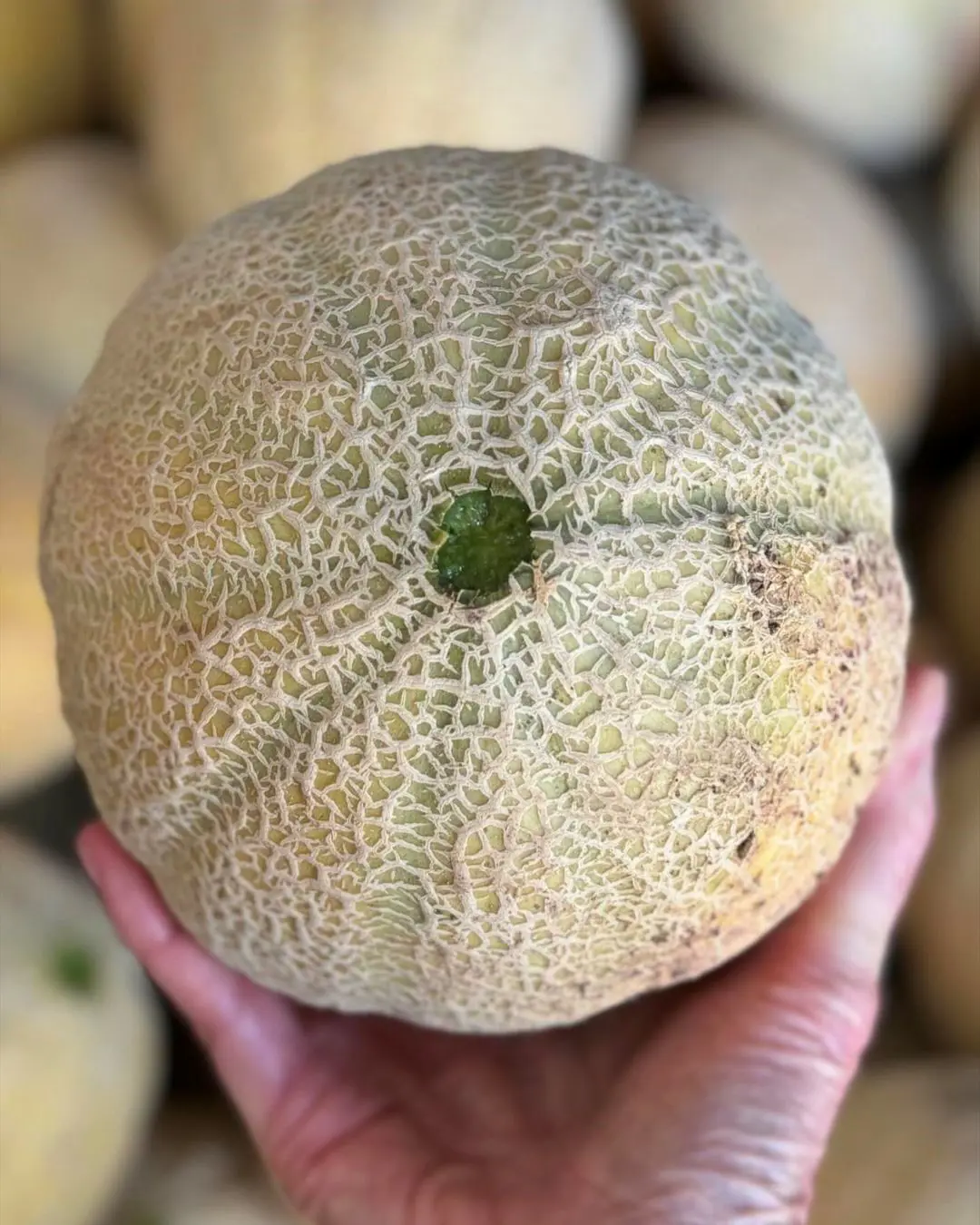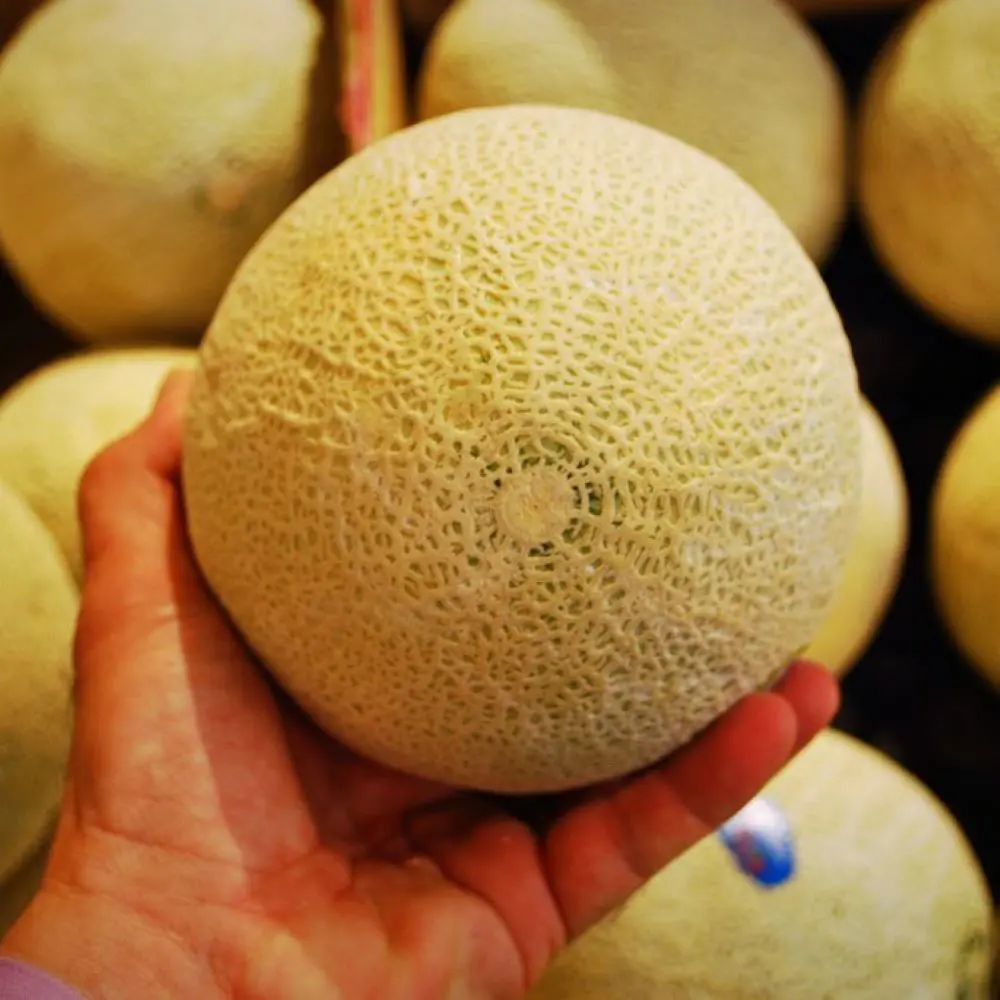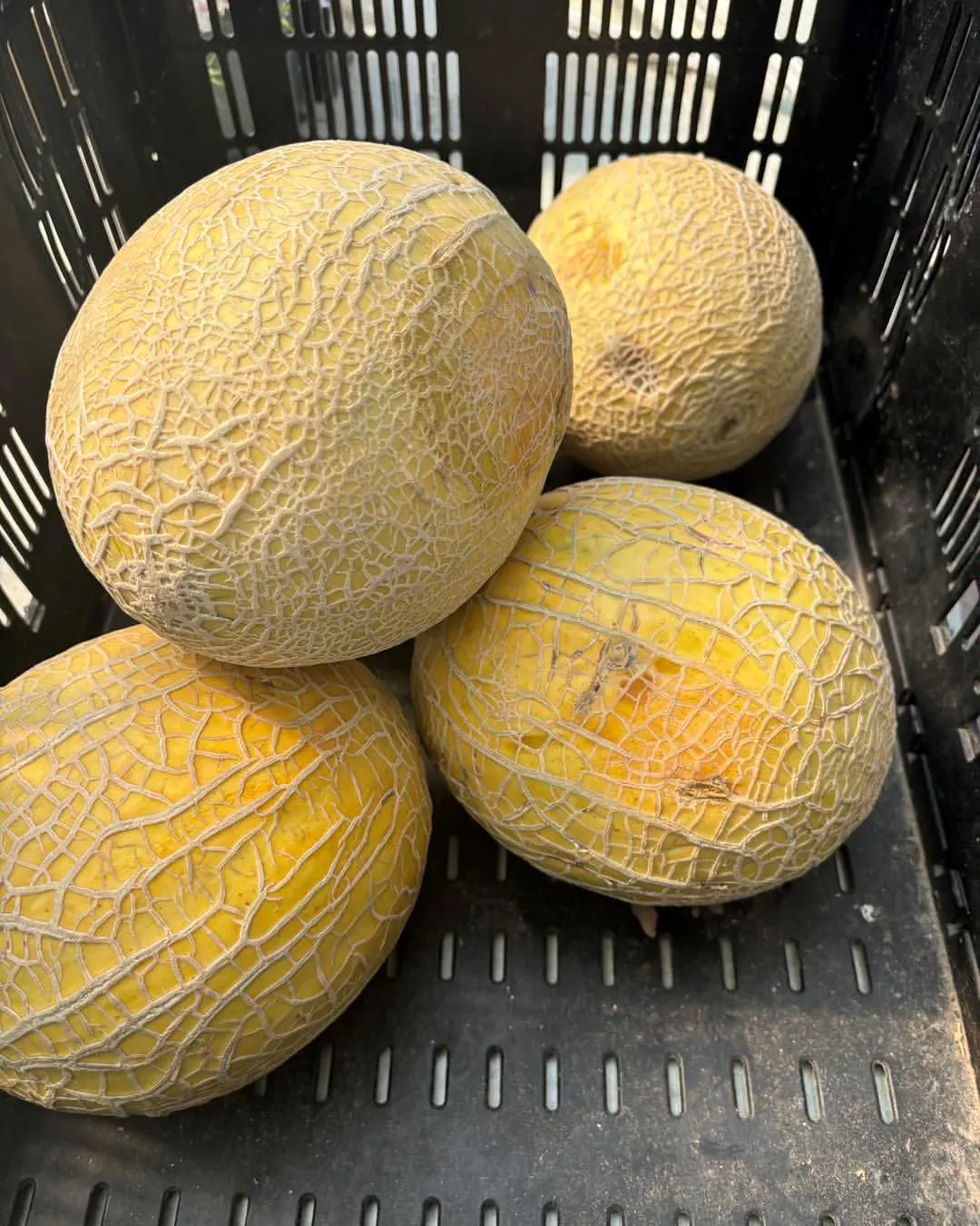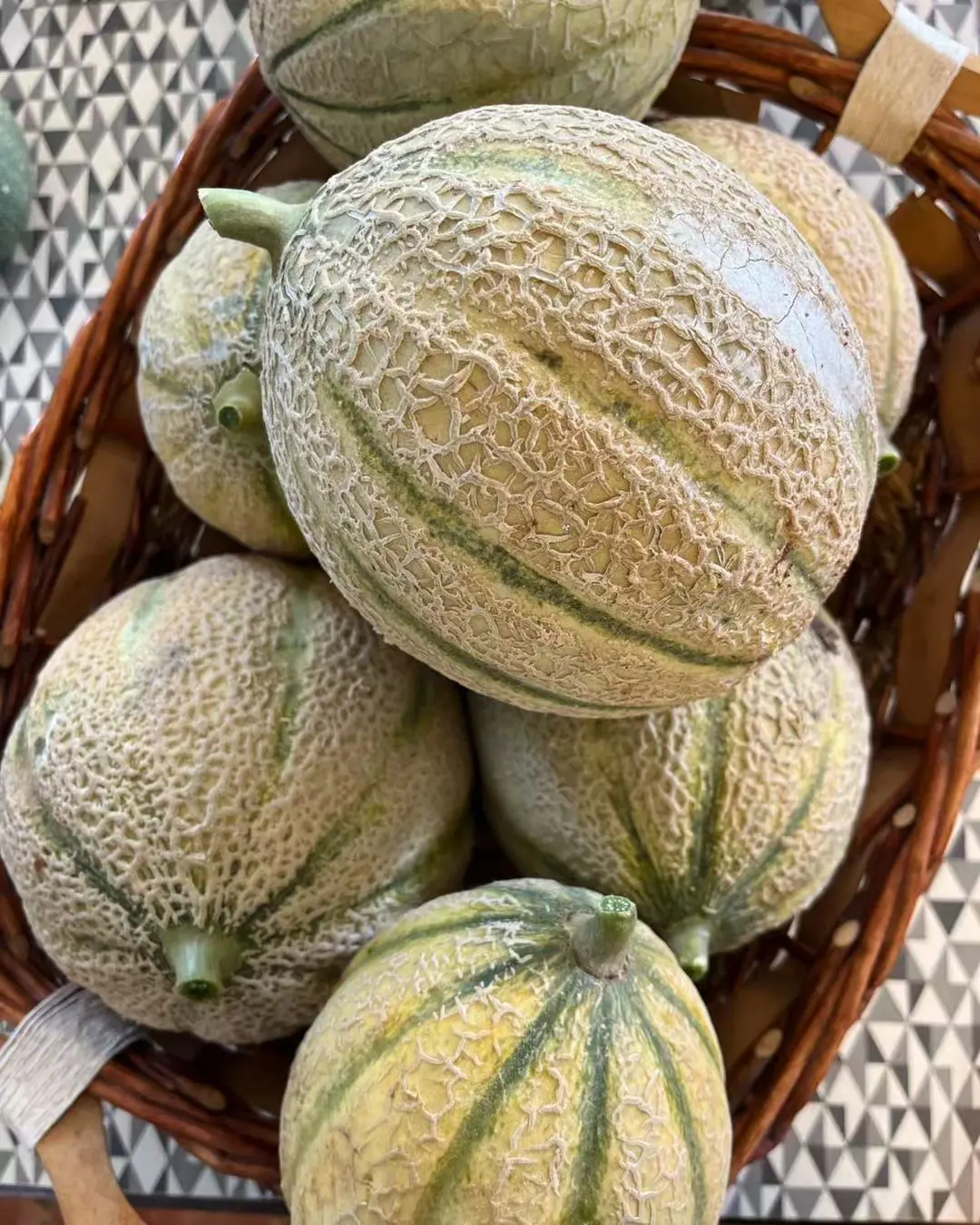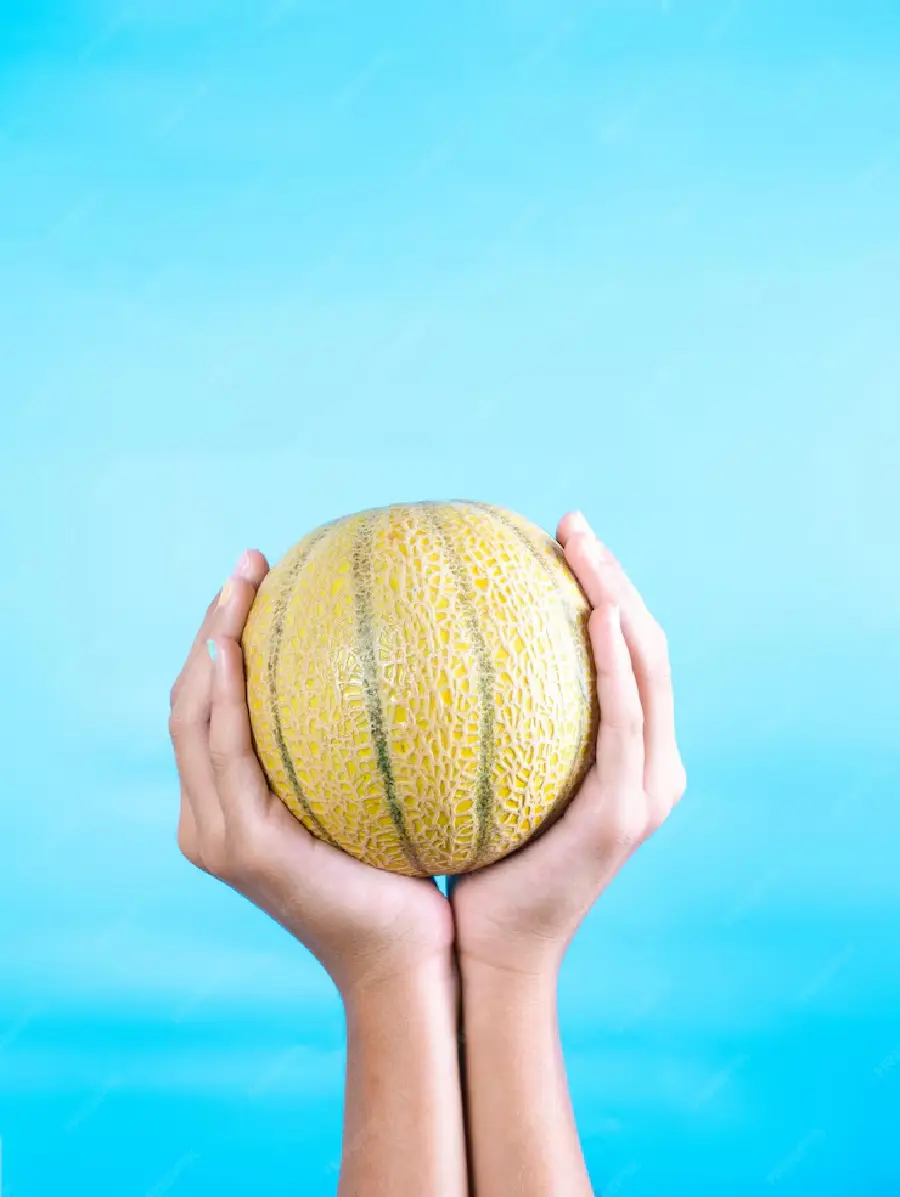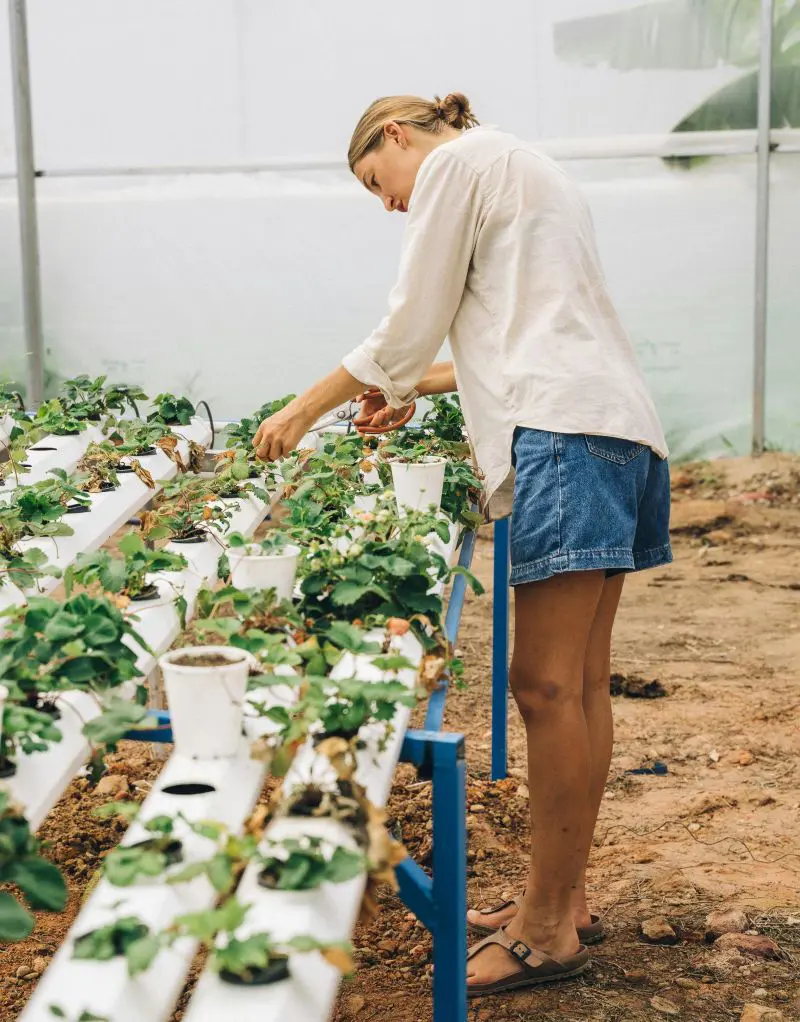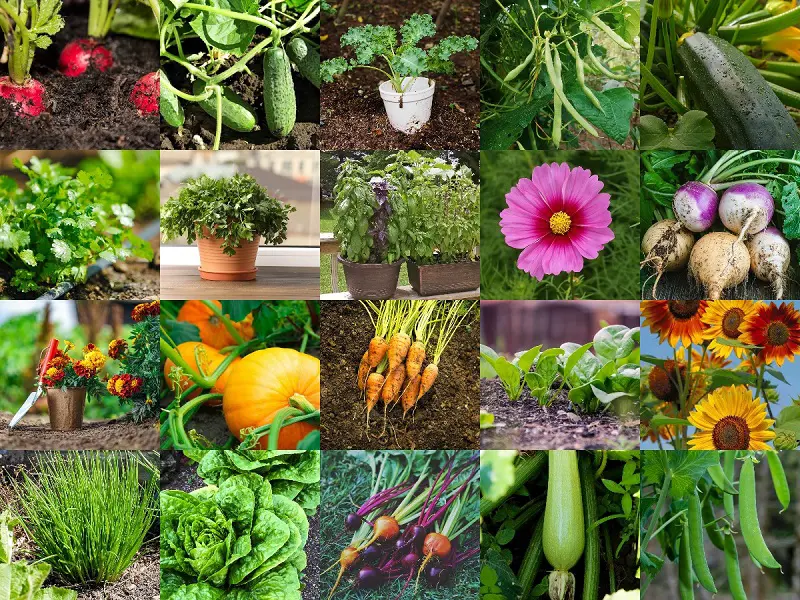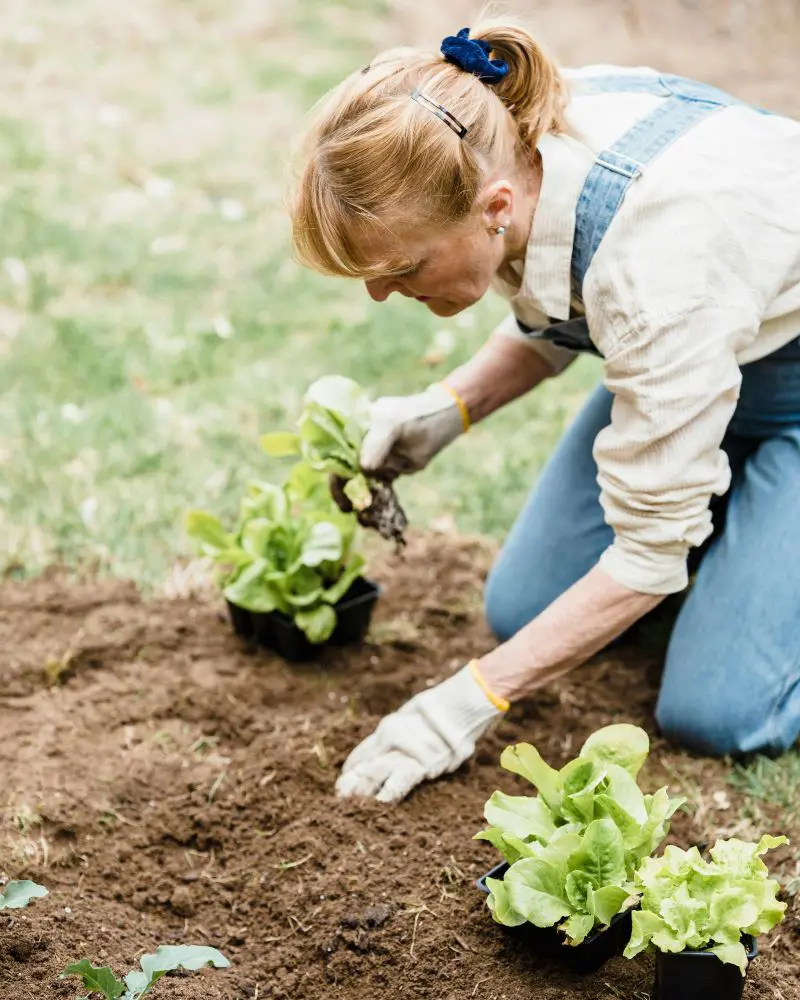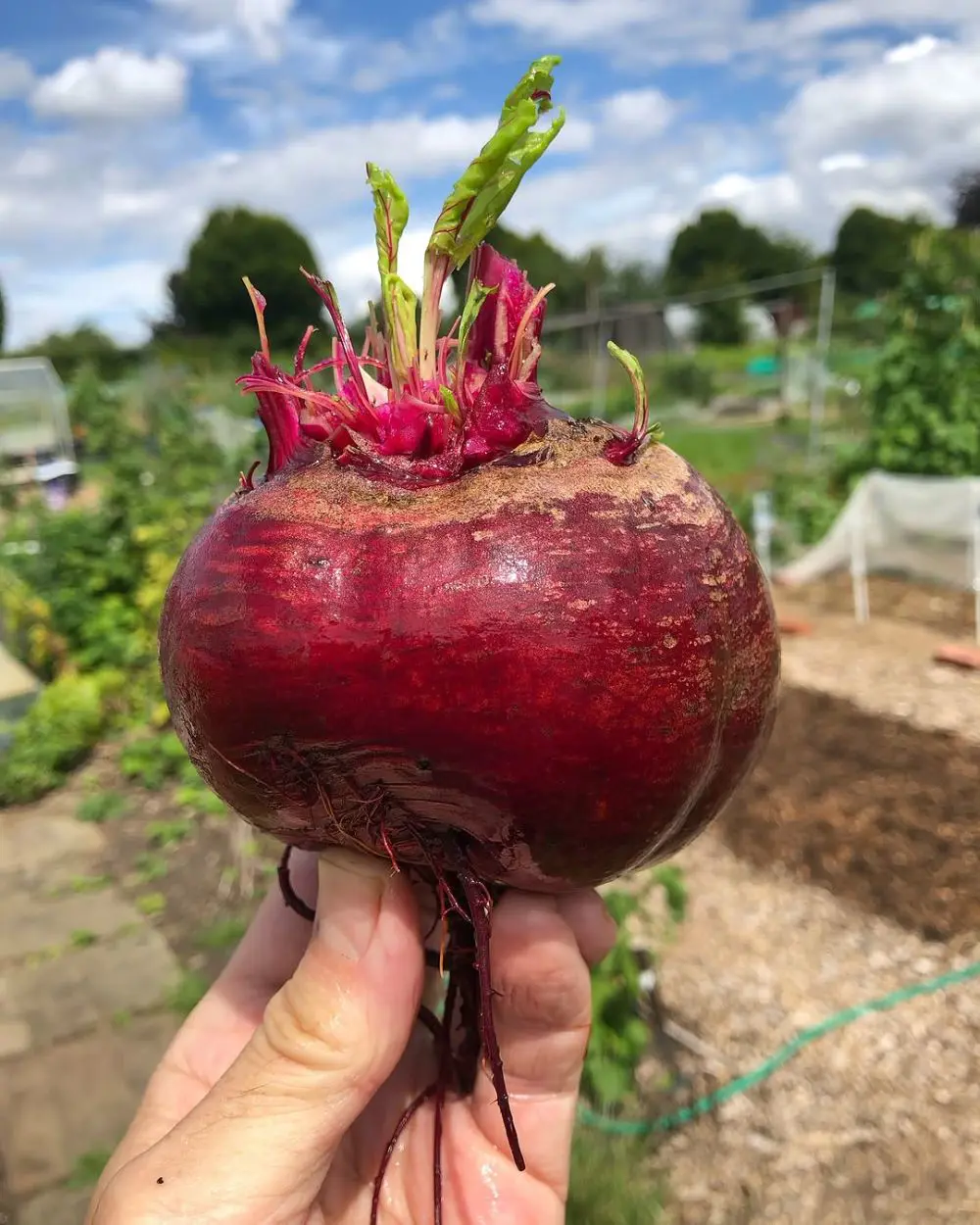1. Check The Stem
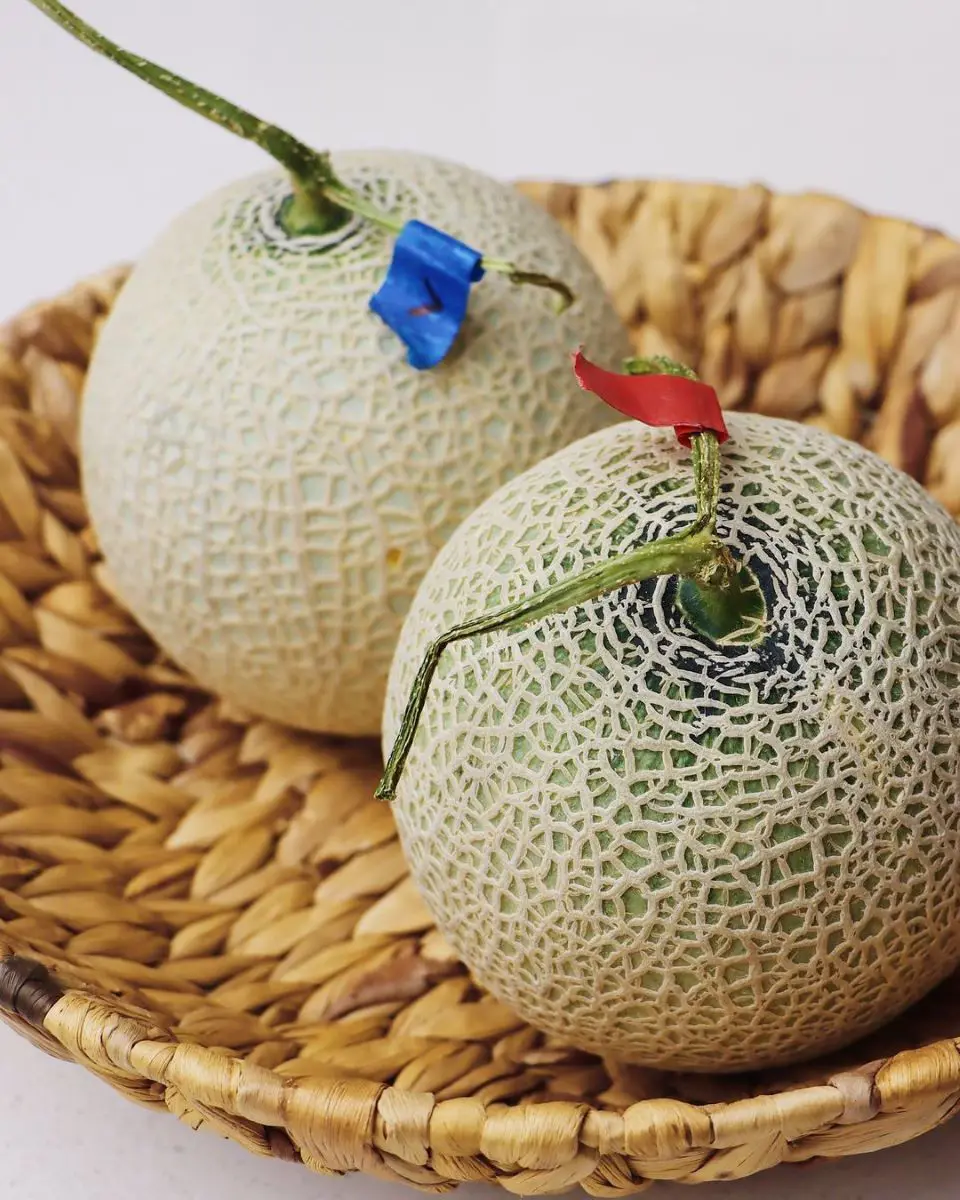
The first thing on how to pick cantaloupe 101 is to check for the stem or the lack of it. Ripe cantaloupes soften and "slip" off the vine from a light tug, leaving an indent. This "slipping" means ripe cantaloupes do not have stems, except for a few cultivars.
If the cantaloupes still have stems, it means they were harvested before they were ripe. So the next time you see a stem on the cantaloupe, avoid it and go for a stemless one.
